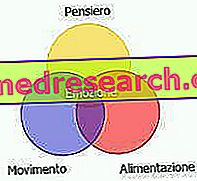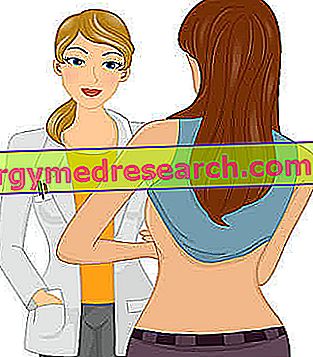gymnastics of maximum effectiveness for today's man
By Dr. Giovanni Chetta
Premise
KEY CONCEPTS
The motor animal man
Total mind-body integration
The network of connective tensegrity
The power of relaxation
Posture and movement
Definition and properties
Artificial Habitat and Lifestyle
Postural re-education
POSTURAL GYMNASTICS TIB
Objectives and indications of a highly effective gymnastics
GP TIB features and guidelines
Phases of a TIB Postural Gymnastics session
Joint mobilization
Motor re-education
Stretching and muscle strengthening
dorsal part of the body
ventral part
Upper limbs
Respiratory re-education
Conscious use of neo-associative conditioning
Conclusion
Appendix - Physical advice
Bibliography
Premise
The main challenge of the 21st century is: how to take a body that was developed for a world of 70, 000 years ago and adapt it to the post-industrial world in which we live "
Thomas W. Myers, 2007.
It is by accepting the "challenge" promptly launched by Thomas Myers that I am going to describe the basic concepts and principles on which, in my opinion, postural re-education must be based and, in particular, such postural gymnastics as to be of maximum effectiveness for the specific problems and needs of today's industrialized man, increasingly "Internet". Like healthy eating, muscular looseness, muscle strength, joint mobility and motor skills, they have always been essential elements for human health, survival and evolution.
TIB postural gymnastics is the result of about 20 years of personal research and experience in the field, both in the therapeutic and sports fields. The primary objective of this work is to be a stimulus and a starting point for reflection for professionals and novices, contributing to the spread of the importance of correct physical activity for the global well-being of man.
TIB postural gymnastics, like an open source system, is a constantly evolving project that anyone who wishes can contribute to within its guidelines.
Key concepts
In order to better clarify the principles on which this gymnastics is based, it is necessary to study some basic principles: " the fundamentals ".
The motor animal man

Actions and movements play a central role in the processes of mental representation, starting from the embryonic stage. The embryo, in fact, is first of all a motor organism. In the embryonic stage, in the fetal phase and in that of early childhood, the action precedes the sensation: reflex movements are performed and then the perception occurs.
The proprioception, the self-awareness, derives from the information of the sensory receptors located in the tendons, muscles, joints and viscera (proprioceptors and enteroceptors), in the skin (cutaneous exteroceptors), in the vestibular apparatus and in the eyes (retinal exteroceptors), on them depends the knowledge on which is our "conformation" and spatial position; to some extent, to answer the question "who am I?", it is also necessary to answer the question "where am I?". It is from the proprioceptive reflexes that mental representations (engrams) arise that allow the birth of complex motor skills and the same ideas.
The motor functions and the body, considered in many cultures as inferior entities and subordinated to cognitive activities and the mind, are instead at the origin of those abstract behaviors of which we are proud, including the same language that forms our mind and our thoughts. As a result, losing control over your body means losing control over your thoughts and emotions.
At critical moments (intense stress), the muscular system constitutes a high priority system: when it is activated, the other systems, such as those responsible for the perception of sensations, attention, cognitive activities, etc., are in a state of relative blockage, since this state is linked in the unconscious to the execution of important actions for survival, such as escape, attack, the search for food, a sexual partner, the nest. Finally today we know how the simple walk in a natural habitat is a powerful rebalancing of the activity of the two cerebral hemispheres and this is due both to the harmonious use of the postural tonic system and to the production of endorphins triggered by physical exercise prolonged over time.
Total mind-body integration
In 1981, R. Ader published the volume "Psychoneuroimmunology" definitively sanctioning the birth of the homonymous discipline.
The fundamental implication concerns the unity of the human organism, its psychobiological unity no longer postulated on the basis of philosophical convictions or therapeutic empiricisms, but the fruit of the discovery that so different sectors of the human organism function with the same substances.
The development of modern investigative techniques has allowed us to discover the molecules that, as the famous psychiatrist P. Pancheri called them, constitute: " the words, the sentences of communication between the brain and the rest of the body ". In light of recent discoveries, we now know that these molecules, called neuropeptides, are produced by the three main systems of our organism (nervous, endocrine and immune). Thanks to these, these three great systems communicate, like real networks, not in a hierarchical way but, in reality, in a bidirectional and diffused manner; in essence, forming a true global network.
In reality, the ever-increasing discoveries on another fundamental system for the human organism, the connective system, impose the expansion from the psychoneuroendocrinoimmunology (PNEI) to the psychoneuroendocrinoconnective immunology (PNECI).



